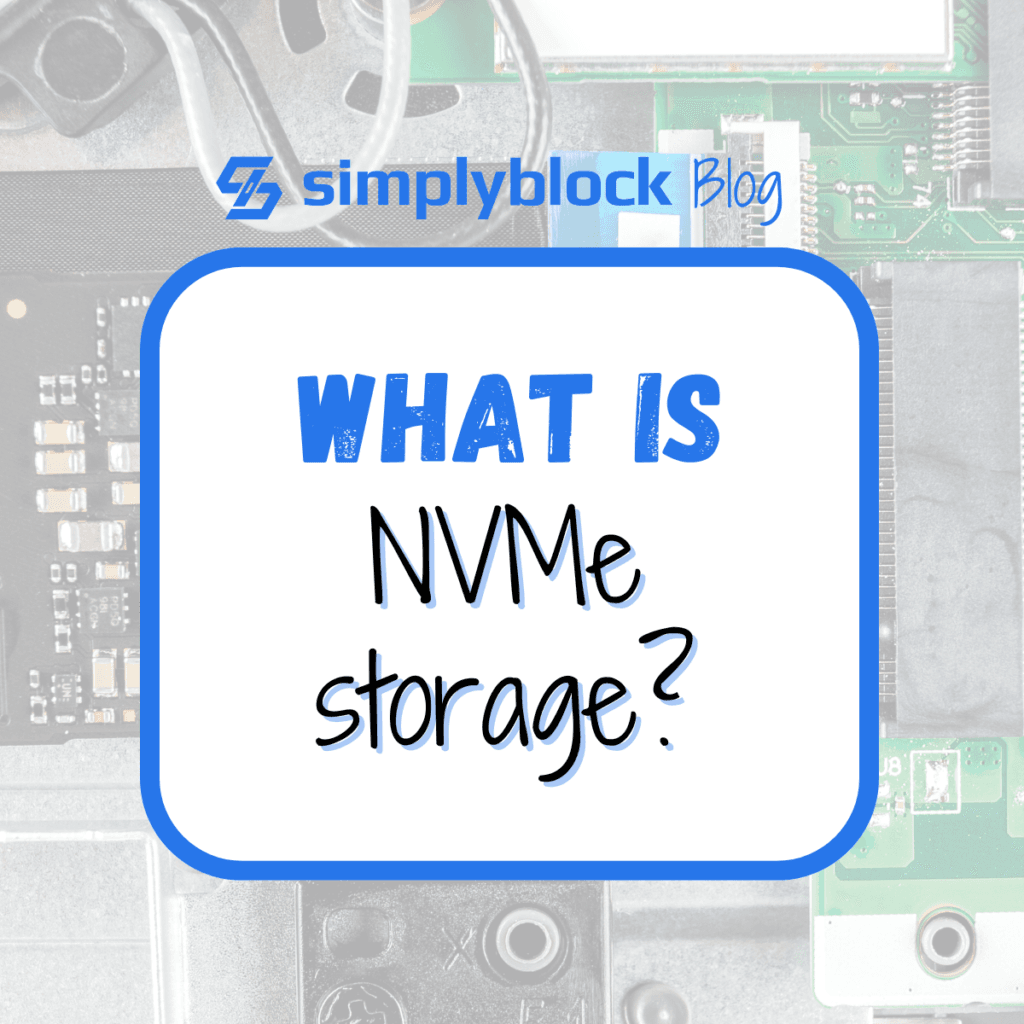How to connect millions of devices every day through MQTT | Dominik Obermaier
Jul 19th, 2024 | 6 min read

Introduction:
This interview is part of the simplyblock Cloud Frontier Podcast, available on Youtube , Spotify , iTunes/Apple Podcasts , and our show site .
In this episode of simplyblock’s Cloud Commute podcast, host Chris Engelbert is joined by Dominik Obermaier, co-founder and CTO of HiveMQ, to discuss how HiveMQ connects millions of devices daily through MQTT, a powerful messaging protocol for IoT applications. Dominik shares how HiveMQ enables large-scale IoT deployments, particularly in industries like automotive and manufacturing, where millions of devices need to be reliably connected. The conversation dives into the unique strengths of MQTT, HiveMQ’s role in scalable IoT networks, and the future of cloud-based IoT infrastructures.
Key Takeaways
What is MQTT, and how does it Work in the Internet of Things (IoT)?
MQTT (Message Queuing Telemetry Transport) is a lightweight communication protocol specifically designed for low-bandwidth, high-latency, and unreliable networks—making it ideal for IoT applications. MQTT uses a publish-subscribe architecture, where devices (publishers) send messages to topics and other devices (subscribers) receive messages from these topics. This architecture is particularly useful in IoT environments, where thousands or even millions of devices need to exchange data reliably and efficiently.
How does HiveMQ Enable Large-scale IoT Deployments with MQTT?
HiveMQ is an enterprise-grade MQTT platform designed to handle massive IoT deployments by enabling scalability, high availability, and resilience. HiveMQ’s clustering capabilities allow it to handle millions of devices connected simultaneously, ensuring consistent communication even during peak loads. The platform provides built-in features for fault tolerance, message persistence, and high throughput, making it a key player in industries like automotive and manufacturing where real-time, reliable communication is essential.
Why is MQTT Considered the best Protocol for Low-bandwidth IoT Applications?
MQTT was built with low-bandwidth and unreliable network conditions in mind, making it ideal for IoT environments like connected cars, remote sensors, and smart devices. The protocol minimizes overhead by using lightweight messaging, allowing devices to transmit data efficiently even over slow or intermittent connections. Its ability to ensure message delivery in environments with frequent disconnections further cements MQTT as the go-to protocol for IoT applications that require reliable communication in challenging conditions.

In addition to highlighting the key takeaways, it’s essential to provide deeper context and insights that enrich the listener’s understanding of the episode. By offering this added layer of information, we ensure that when you tune in, you’ll have a clearer grasp of the nuances behind the discussion. This approach enhances your engagement with the content and helps shed light on the reasoning and perspective behind the thoughtful questions posed by our host, Chris Engelbert. Ultimately, this allows for a more immersive and insightful listening experience.
Key Learnings
What are the best use Cases for MQTT in Logistics, Energy Grids, and Manufacturing?
MQTT’s lightweight, efficient communication protocol makes it ideal for industries where real-time data exchange is critical. In logistics, MQTT helps track and manage fleets of vehicles, parcels, and inventories across vast networks. In energy grids, it ensures reliable communication between distributed systems to optimize energy distribution and management. In manufacturing, MQTT enables machines and sensors to communicate seamlessly, supporting automation and predictive maintenance, and fostering a connected, intelligent production floor.
Simplyblock Insight:
IoT applications in sectors like logistics and energy grids demand not just seamless communication but also high-performance and secure data storage. Simplyblock provides the underlying infrastructure that supports these IoT deployments by offering scalable, low-latency storage solutions. With simplyblock’s storage platform, businesses can securely store and access massive amounts of data generated by IoT devices, ensuring that information is available when needed and systems operate without interruption.
How does MQTT Handle Millions of Simultaneous Device Connections in IoT Networks?
MQTT is designed for scalability, which allows it to handle millions of devices at once. The publish-subscribe model reduces the strain on central servers by decoupling producers and consumers of data. HiveMQ enhances this capability by introducing clustering, which spreads the load across multiple servers, ensuring that the system remains resilient and functional even as the number of devices and messages increases.
Simplyblock Insight:
For IoT systems managing millions of connected devices, reliable storage is crucial to ensure data integrity and performance. Simplyblock’s cloud infrastructure provides high-throughput, scalable storage solutions that can handle the immense data loads typical in large-scale IoT networks. By ensuring fast, secure access to stored data, simplyblock supports the high-performance needs of MQTT systems like HiveMQ, allowing businesses to scale their IoT networks without sacrificing performance or reliability.
What are the Security Considerations when using MQTT for IoT Deployments?
Security is a significant concern in IoT, where devices often operate in untrusted or insecure environments. MQTT includes features like TLS (Transport Layer Security) for encrypting communication between devices and brokers. However, managing millions of connected devices also introduces challenges around authentication, authorization, and data integrity. HiveMQ addresses these concerns by providing robust security features, including support for client authentication, role-based access control, and encrypted communication.
Simplyblock Insight:
Securing IoT data requires not only secure communication channels but also secure storage of the data itself. Simplyblock ensures that sensitive data collected and exchanged in IoT systems is stored securely, with built-in encryption and access controls. By integrating with MQTT-based platforms like HiveMQ, simplyblock adds an additional layer of security, protecting critical data at rest and ensuring that only authorized entities can access it.
Additional Nugget of Information
How does MQTT Compare to other IoT Messaging Protocols like AMQP and CoAP?
MQTT stands out from protocols like AMQP (Advanced Message Queuing Protocol) and CoAP (Constrained Application Protocol) because of its simplicity, low overhead, and suitability for resource-constrained environments. While AMQP is more feature-rich and suitable for enterprise messaging systems, its complexity can be overkill for IoT applications. CoAP, on the other hand, is lightweight like MQTT but is designed for very constrained devices and uses a request-response model, unlike MQTT’s publish-subscribe model. MQTT is generally preferred for IoT applications that require many devices to send data continuously and reliably, even under challenging network conditions.
Conclusion
As IoT deployments continue to scale, protocols like MQTT and platforms like HiveMQ are becoming indispensable for industries that rely on connecting millions of devices reliably. From connected cars to industrial automation, HiveMQ’s use of MQTT enables seamless communication across vast IoT networks, ensuring that devices can interact in real time, even under challenging conditions.
Simplyblock supports this growing ecosystem by providing the scalable, secure storage solutions needed to manage the immense data flow generated by IoT devices. Whether it’s ensuring low-latency access or securing sensitive data, simplyblock’s platform integrates smoothly with MQTT-based architectures, empowering businesses to scale their IoT systems confidently.
If you’re ready to learn more about the future of cloud-based IoT systems, be sure to tune in to future episodes of the Cloud Commute podcast for more expert discussions!
You may also like:

AI Storage: How To Build Scalable Data Infrastructures for AI workloads?

What is NVMe Storage?

Serverless Compute Need Serverless Storage
